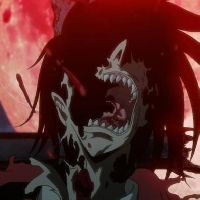Saya Kisaragi
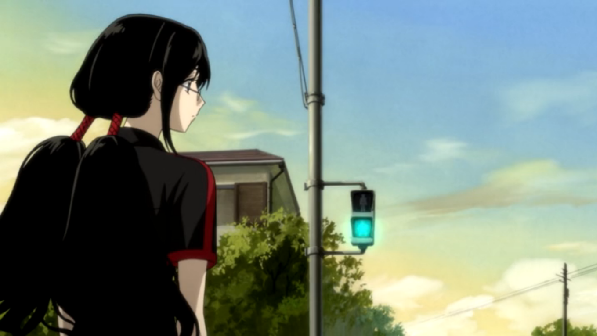
Saya inhabits an unnamed rural town in the backdrop of modern Japan. In this town, Saya stands, mystifying onlookers. She is kind, clumsy, happy, and cheerful, living pecaefully in a small Japanese town, and has no dark memories. She is indeed just like a normal, everyday girl who clumsily falls on her face in front of her friends even though she is the most athletic in her class.
She lives comfortably as the daughter of Tadayoshi Kisaragi, the local shrine priest, until she has to break the sweet illusion that she is a normal girl going through her most innocent years in high school. Stripping away a girl’s innocence is a sad and uncomfortable thing, but it is an inevitability which all girls must eventually face, including Saya.
This is important because it shows how she parallels most girls; she may seem normal and weak; and gender stereotypes across the globe tell us that girls are innocent and should be protected. But as Saya Kisaragi represents all girls, the seemingly normal look is only a surface that hides deeper traits and troubles. Perhaps Saya’s problems are extreme when compared with other girls, but a trouble is a trouble.
Now it is time for her to stop being a little girl. One night, illuminated by shrine candles, she has a serious and determined expression in front of the father she respects and loves. Her father, without guilt about the pain it will surely cause Saya, tells her she must fight an Elder Bairn. It is abrupt and odd, but symbolises a girl’s fall from innocence, as girls must face off against the monsters of society abruptly after they are born and quickly realize that there is a fight. There is little to do to hide from the monsters that are the perverts, the misogynistic, or the gender stereotypes. And what does Saya do?
She uses the skills her father teaches her. Saya fights wantonly, viciously, without reserve, against the Elder Bairns, while revealing them to be grotesque creatures with horrible killing mechanisms, and the only way to kill them is to use her sacred sword.
As the battle gets more heated and Saya fights more fiercely, her eyes turn crimson and animal-like, signaling a berserk state. This state causes her expression to become more serious and she gains the ability to effortlessly slice through and kill the Elder Bairns with an even more calm disposition.
It is like Saya is saying that - when a woman has fought hard against the darkness of a society that really just wants everyone to work for the good of it and doesn’t care much about most people’s thoughts or wishes - and cannot win with her current skills and state of mind, she has to push herself to get even better. And before that, it is telling us that when you are up against monsters, you yourself have to become monster. A monstrous will. A monstrous determination. Monstrous skill. Something you can use to fight like Saya, a monster with all of these things.
Fumito Nanahara
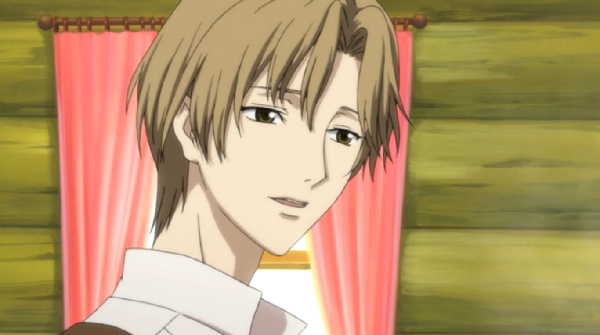
Fumito Nanahara is initially seen as a neighbor to Saya and owner of Guimauve, the dainty coffee shop that Saya frequents, as a good man with no faults who is easy to talk to. When he speaks with Saya, he is insightful and listens to her troubles. While being a normal man, he has an unnaturally nice expression, something that would make the paranoid view him as a suspicious man. Do “smiling faces” really tell lies? He serves Saya breakfast and makes bento lunches since Saya and her father cannot cook; it is a kind gesture to a neighbor and friend, Tadayoshi, who he has known for a long time. His presence goes on with the only indication of vice or folly being the lack thereof, and he is seen to constantly support Saya and her father.
But snakes do lie in the grass, and wolves do walk among the sheep. Near the end of the series, Fumito is revealed to be the mastermind behind the thanatopsis the town has always been and has become. He shows no remorse when controlling the Elder Bairns with Saya’s blood, and he has a disconcerting stoicism that could cause trepidation in any mind. The revelation of his evil plans and personality reveals the banality of evil: that he is able to do these things because he lacks something mentally. It is because of this that he only has a questionable reason to do these things. He simply wants to wager, like a devil seeking souls, if Saya will remain her kind self when her memories return, a memory of Saya's revealing he obsessively wants to know the source of Saya’s powers. For that he would do such grotesque acts like killing all defectors from his experiment with the Elder Bairns without mercy. Fumito is not a man, he is a monster.
He is a different monster than Saya. However, like Saya, he has his own fight: he must fight against his own philosophies, himself, constantly trying to find the answer to what is a human. He is the personification of philosophy, as evidenced when he is revealed to be the narrator of the many philosophical sayings and questions that are presented in some mysterious scenes that randomly are shown throughout the series. And in fact, he is the only character that has philosophical thoughts, making him somewhat of an alien to anyone else in the series, and even a lofty figure from his control over basically all events in the town and experiment.
However, he lacks emotion, causing him to to have no moral compass, thus making him able to commit evil acts, and thus causing his imperfection; so he represents philosophy without emotions. The series then is asking the question: what is a philosophy without emotion? It makes a logical case in Fumito. We see him start off with his philosophy of pondering on what gives Saya her power: is it her memories or her natural gifts? He decides to go through the most logical and efficient route: to secretly experiment on Saya by causing her to lose her memories, while in the process killing hundreds. Basically, emotion leads to morality, and thus philosophy without emotions has no morality, giving no basis for what is viewed as immoral. Immorality is punished, so philosophy with emotion leads to limits from fear of punishment and a moral compass. Therefore philosophy without emotion does not have those limits.
Tadayoshi Kisaragi
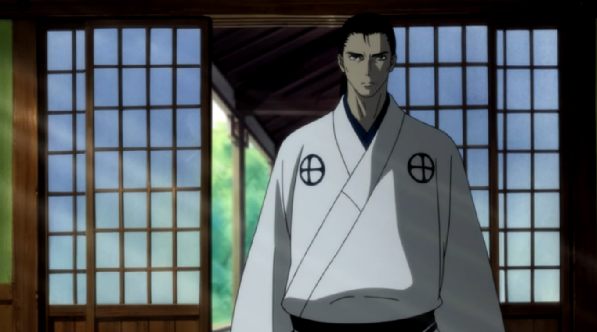
Tadayoshi, with the aura of a stone figure, speaks wise and thoughtful words to Saya as a father - a good father figure. As a shrine priest, he has a perpetually stern expression, has no vices, and is loved dearly by Saya – but has no reservation about sending his only daughter to kill monsters. But since this fight is like a duty to fight for the people, it would be a tough decision for any father, so his actions are forgivable.
However, this illusion is broken when he is revealed as a monster. Later on near the end of the series when Kanako runs towards him with the dire hope that he would protect her, he crushes her with unnatural strength, mercilessly ending her life. He is then sliced down by a distraught Saya who pleads for the return of her father. Then as his body lies on the ground like a rag doll, it twists and distorts, revealing his terrifying lycanthropic Elder Bairn human hybrid transformation, alive once again, and fights ferociously with Saya.
Although the Tadayoshi that Saya knows is a terrible creature, he and Saya represent something greater: the relationship of a father and daughter. A father is one of the most influential people in a girl’s life. He develops her self-esteem and guides her worldview from the way he respects and treats women, and affects her view of men so she knows who she can trust. Tadayoshi truly loved Saya, and Saya loved him. However, life is not so simple because fathers are not perfect, and they can be just like the monsters of society even with their love for their daughter, and that’s what Saya learns - that even her father has a hidden monster.
Because Tadayoshi is guided by Fumito, noted as the personification of philosophy without emotion, he guides Saya down a bloodstained path even though he cares for her. And he lies to her, saying her mother died the same - basically saying it is what women do, paralleling how society has gender stereotypes, even though in both gender stereotypes and Tadayoshi's words to Saya about her mother are lies. So Tadayoshi allows another person’s philosophy to dictate his actions in opposition to his own desire and feelings. This is actually a common trait of fathers and other parents in society. From the moment a daughter is born, a father knows the difficult path of a woman, thus he must teach her to fight, even when he wants her to enjoy her life, guided directly or indirectly by socioeconomic factors and the philosophies of people he wants to protect her from. For instance, he tells her to get a job so she can take care of herself when he is gone, because society does not babysit the weak and tells everyone they must get jobs and work for the good of everyone, like how Saya fights monsters to protect everyone. He tells her to stay on guard so that she won’t be hurt by people, even though that will cause her to be anxious, and does not want her to go out because he himself is anxious of her being hurt by the threats around her. They are philosophies and feelings that can end up straining their bond, but they are in essence just protective measures. And perhaps Tadayoshi just wants to protect Saya, deep down.
Dog
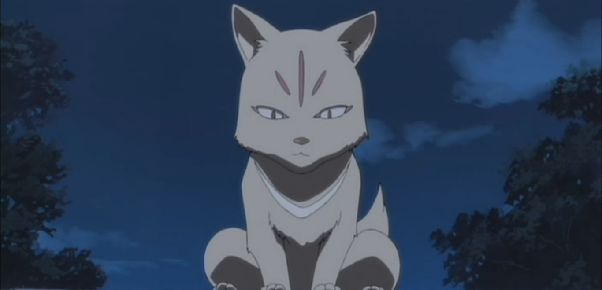
Every so often a dog with a calm expression appears, looking at Saya as though it has some significance. Its importance is seen when it talks to Saya. When the dog talks, he speaks intelligently and wisely, telling Saya he had previously made a pact with her to grant her wish in return for an appropriate price, hers being a high one. Saya’s wish is to simply remain as she is - something with a high price indeed, given how those who remain themselves can be discriminated against for being unique, and given the grim things the world employs against its citizens that can cause a person to change. It is a sad and depressing wish that invokes an existential quandary, something the series frequently employs.
The dog is a representation for an omnipotent entity like God, with some parallels to how some religions like Christianity view him. The dog is there as a pillar in a time of crisis, and it is the only ally Saya has at the end of the series, paralleling how God is seen as all around us and watching us. The dog watches but doesn’t interfere or help Saya when she is fighting monsters, only appearing after a climactic moment has calmed and giving her comfort or a guiding hand, much like how God is seen to not directly help in a time of crisis; he gives a guiding hand and allows one to solve a problem themselves. The dog can grant wishes with no mention of a limit, for an appropriate price, paralleling how God is often seen as omnipotent and in some cases rewards the good. Those things, coupled with how “dog” spelled backwards is “god,” show parallels to the idea of an omnipotent entity.
Main Cast
The Main Cast is a group of people who Fumito employed to specifically act as Saya’s close schoolmates. They seem to be driven by greed and have no good motives - the make-believe friends. They fake their deaths throughout the series in order to lure out a weakness in Saya as it relates to her emotions, so her lost memories can perhaps return.
Kanako Tsutsutori
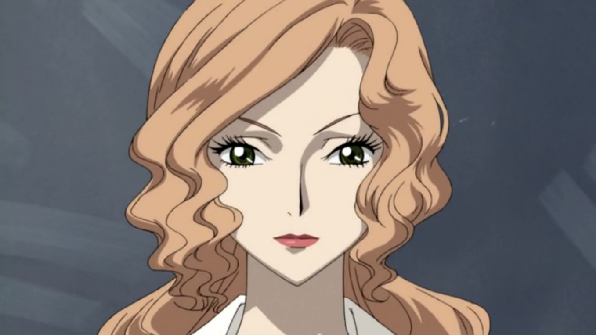
Kanako Tsutsutori is a friendly and inviting homeroom teacher who likes to interact with her students. She greets them and allows them to express their humor, paying special attention to an innocent soul who gives the air of having to be protected, Saya. Having a past in science as a researcher, her credentials are appropriate for teaching chemistry. “There are some things you can only get in a classroom,” she says.
However, Kanako Tsutsutori is a careless adult. Her sin and carelessness causes her to be the weakest link – and a construct is only as strong as its weakest link. She causes Fumito to initiate his wrath upon some of the other main cast members. He summons Cerberus to commence a grotesque slaying, all because of Kanako leading the careless bunch - the blind leading the blind. However, Kanako escapes Cerberus since it was busy slaughtering other cast members, but she only escapes into the embrace of a crazed Tadayoshi, only to be crushed by his herculean hold.
Kanako represents the knowledge-seekers. She only wanted to see a real Strovetide, some mysterious event talked about throughout the series, and which she studied and learned about from legends and poems about the creatures that are Bairns. The context of the Strovetide is unknown, but it is sure to be a sinister event.
Unfortunately for Kanako, some knowledge is dangerous and can bring about deathly events, and that’s what Kanako invokes: the dangerous part of the pursuit of knowledge. She knew the risks, and knew that Bairns were terrible monsters, but alas. Knowledge is curiosity, and curiosity killed the cat. Curiosity is sometimes a weakness. Weakness is a sin. With sin comes death. Kanako Tsutsutori made the sin of being recklessly curious, thus she is culled.
Kanako represents all of us. We like to do dangerous things to have fun and to learn something new, all for momentary pleasure. Sometimes we are arrogant like Kanako who thought she could pull one over on Fumito, causing the others to follow this mentality - a group mentality. However, some things are greater and more powerful than we are; in Kanako’s case, it is Fumito.
Furthermore, we must think about and avoid the dangers of our acts before we commit them. Otherwise, we can become disillusioned , hurt, and even worse, dead. Disillusionment can cause you to lose hope and desire for a thing you once loved. Being hurt can cause us to not be able to do the things we once enjoyed. And death is the end-all. Basically, these three things can stagnate our growth as people, causing us to not achieve our goals and becoming nothing greater than our current selves, so these three things must be avoided at all costs.
Nene Motoe and Nono Motoe
Nene Motoe
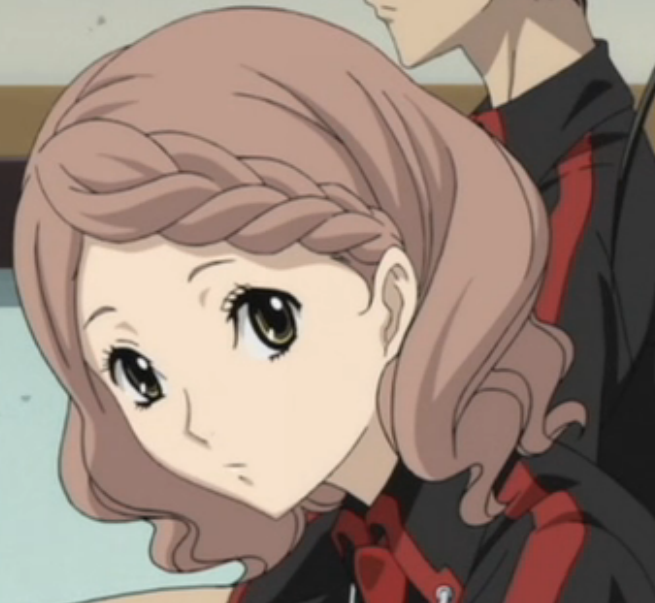
Nene’s defining feature that differentiates her from her sister is that the front sideways ponytail is to the right. She is energetic, fun, and playful, and is seen constantly joking around and being silly with her sister, Nono. They add a comedic and vibrant tone to the classroom, making class seem fun and dandy.
However, as a Main Cast member, she is duplicitous in nature, and is actually alive (after having faked her own death) and is a criminal who has done disgusting things; although they are not detailed during her reveal, it is enough for them to go through being in the Main Cast of Fumito’s experiment. However, we do know it has something to do with forcing girls to do things, as her sister and she were already making plans about forcing girls to wear the uniform of their fake school. Sounds like a disturbing would-be hobby at work there.
Still maintaining her childish nature, she does not care about the feelings of others, and hypocritically calls Saya creepy while being a freak herself. She is only seen doing things for her own benefit, and hopes to have her record wiped clean by Fumito for being in the Main Cast.
However, she is culled along with Kanako by way of Cerberus. She is split apart down the middle, yellow panties hovering midair in the maw of Cerberus – something that is perhaps karmic justice for her vile and childish decisions and criminal activity. Justice is served.
Nono Motoe
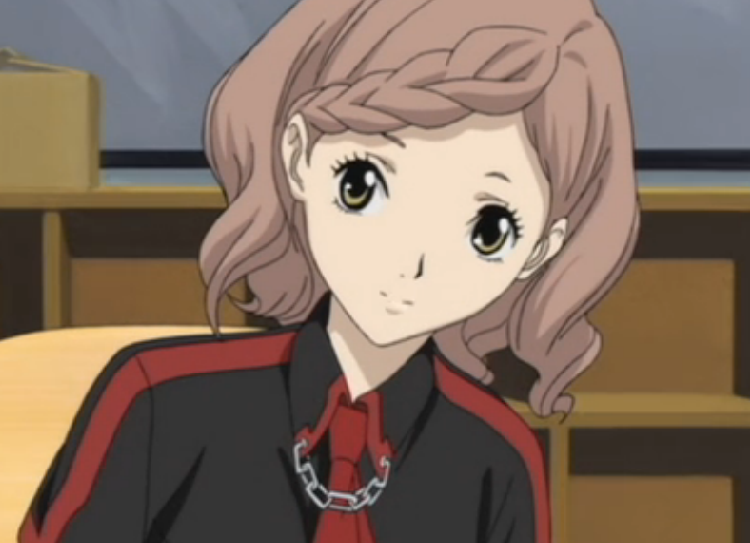
Like her sister, she has a sideways ponytail, but it is on the left side of the front of her hair. She is much like her sister: vile, disgusting, childish, and playful; and she is also part of the Main Cast. Her death is faked by the shadow Elder Bairn, really making Saya depressed. However, she is revealed to be alive; and is later bludgeoned to death, orange panties smashed with her small body clean under Cerberus’ paw.
These two sisters represent the selfish pursuit of happiness. They wanted to do as they pleased without regard for others, like how they agreed to Kanako’s plan without regard to Fumito’s feelings and powers, and thus are culled.
Shinichirou Tokizane
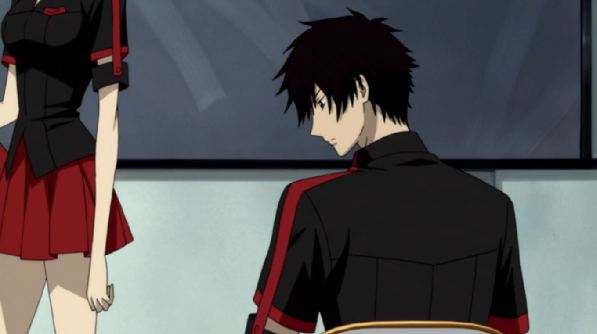
Shinichirou is often seen staring at Saya intently from the side. He does not talk much throughout the series. However, as the series progresses, we see him become close to Saya, and Saya starts to deeply care for him. He likewise seems to deeply care for and love Saya.
Unfortunately, he is a member of the Main Cast, causing his persona to actually be a facade. His reason for joining the cast is money, the root of all evil. To help himself, he resourcefully obtains Elder Bairn blood and force-feeds it to Saya to speed up her memory recovery. However, he follows along with Sanako and is impatient, causing him to be culled. He is killed by Cerberus by having his lower body and head crushed, his corpse devoured in its entirety. Thus he represents how the relentless and greedy pursuit of money often leads to death and destruction.
Yuuka Amino
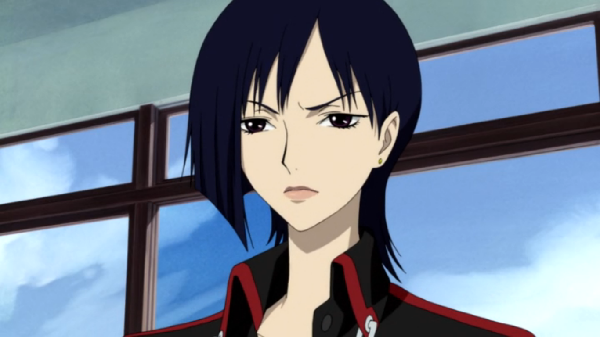
A dear friend and confidant who can be counted on to be hot-headed and nag her friends like a mother. She is once described as a “straight man” by Itsuki, but she is a good friend and gets along well with anyone, and has a surprisingly mature voice and appearance. She often talks to and is close to Saya. She is annoyed by Saya’s tenderness toward people that causes her to help them even when she will be late to class – something Yuuka is very keen to avoid. This is all part of her hot-headed "mom" routine. Furthermore, she is Saya’s best friend and is around for her up until she is killed by the spider Elder Bairn. Or so she wants you to believe.
Contrary to her fake persona, she is a cold, level-headed and calculating Main Cast member. We don’t see much of her after her fake death because she actually fulfills her role as a cast member and maintains her fake death to obtain her goal: to become the next governor of Tokyo. How fitting it is for her to be into politics, a territory known to be home to cold, calculating people who would lie and cheat their way into high positions; and yes, that is what she represents. She represents the politicians who get what they want. At the very least, Yuuka has not been seen to necessarily be a bad person. It is just that she played a part in the Main Cast to fulfill her goal, with no mention of criminal activity.
Itsuki Tomofusa
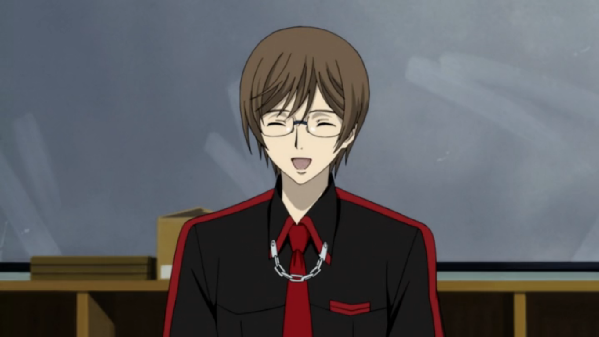
Itsuki is the bright president of Saya’s class who she calls Chairman or Class Rep. He is seen as level-headed and consistently interacts with the group as he plays along with Nene and Nono. His dependability in constantly helping Saya shows his love for her – something known by the group that he is teased about. At the end, he is the only one who did not fake his death, which Fumito is disappointed in, and he dies protecting Saya from the piercing bullets of Fumito’s deathly soldier. Also, since Itsuki’s goal in being a participant is not revealed and we do not know his monster, he is somewhat of an enigma to the series, as he is only seen being a nice guy and helping Saya.
Basically, Blood-C humans invoke the many vices of man, all relating to greed: money, power, fame. They represent a society characterized by these things. What are Blood-C men and women? They are pretty troubled.

